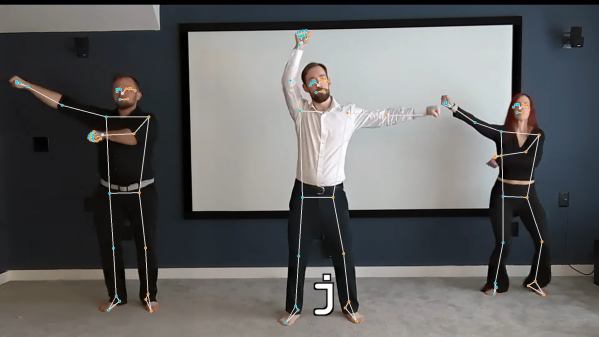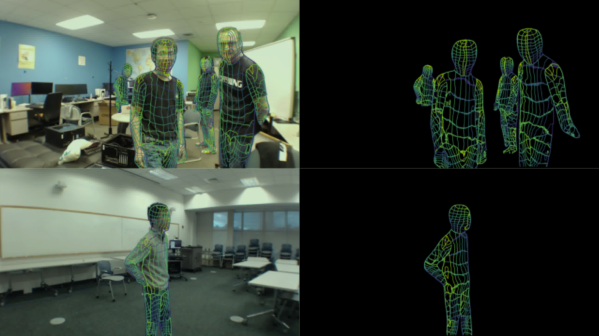If you felt in your heart that Hackaday was a place that would forever be free from projects that require extensive choreography to pull off, we’re sorry to disappoint you. Because you’re going to need a level of coordination and gross motor skills that most of us probably lack if you’re going to type with this full-body, semaphore-powered keyboard.
This is another one of [Fletcher Heisler]’s alternative inputs projects, in the vein of his face-operated coding keyboard. The idea there was to be able to code with facial gestures while cradling a sleeping baby; this project is quite a bit more expressive. Pretty much all you need to know about the technical side of the project can be gleaned from the brilliant “Hello world!” segment at the start of the video below. [Fletcher] uses OpenCV and MediaPipe’s Pose library for pose estimation to decode the classic flag semaphore alphabet, which encodes characters in the angle of the signaler’s extended arms relative to their body. To extend the character set, [Fletcher] added a squat gesture for numbers, and a shift function controlled by opening and closing the hands. The jazz-hands thing is just a bonus.
Honestly, the hack here is mostly a brain hack — learning a complex series of gestures and stringing them together fluidly isn’t easy. [Fletcher] used a few earworms to help him master the character set and tune his code; the inevitable Rickroll was quite artistic, and watching him nail the [Johnny Cash] song was strangely satisfying. We also thoroughly enjoyed the group number at the end. Ooga chaka FTW.
Continue reading “Modern Dance Or Full-Body Keyboard? Why Not Both!”













